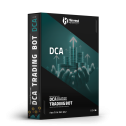Adopting strategies that can help enhance portfolio growth and mitigate risks is essential in today’s dynamic investment landscape. One such strategy is Dollar-Cost Averaging (DCA), which allows investors to diversify their investments and optimize long-term returns. In this article, we will delve into the concept of DCA, understand how it works, and explore its benefits for portfolio growth. Whether you are a seasoned investor or new to the world of finance, DCA can be a valuable tool in your investment arsenal.
What Is Dollar-Cost Averaging?
Dollar-Cost Averaging is an investment strategy that involves regularly purchasing a fixed amount of a particular asset, regardless of its price fluctuations. Instead of making large lump-sum investments, DCA allows investors to spread their investments over time, potentially reducing the impact of short-term market volatility.
How Does Dollar-Cost Averaging Work?
DCA works by consistently investing a fixed amount of money at regular intervals, such as monthly or quarterly. When the asset price is low, the fixed investment amount buys more shares or units; when it is high, it buys fewer shares or units. Over time, this strategy aims to average the cost per share or unit, potentially yielding favorable returns.

Benefits of Dollar-Cost Averaging
Mitigating Market Volatility
DCA helps smooth out market volatility’s impact by investing fixed amounts regularly. It prevents investors from making emotional investment decisions based on short-term market fluctuations.
Lowering the Average Cost per Share
DCA enables investors to buy more shares or units when prices are low and fewer shares or units when prices are high. As a result, the average cost per share or unit tends to be lower than making a lump-sum investment at a single point.
Disciplined Investing
DCA promotes a disciplined approach to investing by removing the need for timing the market. Instead of predicting the best entry point, investors can focus on consistently contributing to their investments over time.
Reducing Emotional Bias
Investors often succumb to emotional bias, making impulsive decisions during market exuberance or panic. DCA helps to mitigate these biases by establishing a predetermined investment plan, reducing the influence of short-term market sentiments.

Implementing Dollar-Cost Averaging
To implement Dollar-Cost Averaging effectively, consider the following key factors:
Selecting an Investment Vehicle
Choose an investment vehicle that aligns with your financial goals and risk tolerance. This can include stocks, bonds, mutual funds, exchange-traded funds (ETFs), or cryptocurrencies, depending on your investment preferences.
Setting the Investment Frequency
Decide on the frequency of your investments, whether monthly, quarterly, or another interval that suits your financial situation. Consistency is key for DCA to benefit from the strategy’s long-term effects.
Choosing the Investment Amount
Determine the fixed amount you will invest at each interval. It’s important to strike a balance between a meaningful sum for your financial situation and one that allows you to maintain consistency over time.
Examples of Dollar-Cost Averaging in Action
Case Study 1: Company XYZ Stock
Let’s consider an investor who invests $500 in Company XYZ stock monthly for a year. Regardless of the stock’s price fluctuations, investors consistently purchase shares worth $500. Over time, the average cost per share will reflect the overall market conditions, potentially resulting in a lower average cost than a lump-sum investment.
Case Study 2: Cryptocurrency Investment
DCA can be applied in cryptocurrencies by regularly investing a fixed amount in a specific cryptocurrency. This approach can help reduce the risk of high price volatility and potentially lead to a more balanced investment portfolio.
Potential Drawbacks of Dollar-Cost Averaging
While Dollar-Cost Averaging offers numerous benefits, it’s essential to be aware of its potential drawbacks:
Missing Out on Market Upswings
Since DCA involves regular fixed investments, investors may miss out on market upswings when prices rise rapidly. However, it’s important to remember that DCA is a long-term strategy focused on consistent growth rather than short-term gains.
Increased Transaction Costs
Implementing DCA often involves multiple transactions over time, leading to higher transaction costs than a lump-sum investment. Investors should consider these costs when evaluating the overall returns.
Dependency on Market Trends
DCA performs optimally in a volatile or declining market, where prices may decrease over time. In a consistently rising market, investors may experience slower growth compared to a lump-sum investment.
Monitoring and Evaluating DCA Performance
To assess the performance of your DCA strategy, consider the following:
Tracking Investment Progress
Regularly monitor and track your investments to ensure they align with your financial goals. Review your portfolio’s performance and make adjustments if necessary.
Analyzing Portfolio Returns
Evaluate the returns generated by your DCA strategy over time. Compare the performance against relevant benchmarks to gauge the effectiveness of your investment approach.
DCA and Profit and Loss (PNL)
Dollar-Cost Averaging can impact your Profit and Loss (PNL) in different ways. As the average cost per share or unit decreases over time, it may contribute to potential gains. However, the actual PNL will depend on the performance of the asset and the specific investment period.
DCA and Return on Investment (ROI)
Dollar-Cost Averaging can influence your Return on Investment (ROI) calculation. Since DCA involves investing at different price points, the ROI will depend on the asset’s overall performance and the specific investment period. Evaluating ROI in DCA requires considering the average cost per share or unit and comparing it to the final value.
Dollar-Cost Averaging and Long-Term Investment Goals
Dollar-Cost Averaging is well-suited for long-term investment goals, such as retirement planning, building an education fund, or accumulating wealth over time. You can take advantage of market fluctuations by consistently contributing to your investments and potentially achieving steady portfolio growth.

DCA Trading Bot
Automating your Dollar-Cost Averaging strategy can further streamline your investment process and maximize its benefits. DCA trading bots are designed to execute regular investments at predetermined intervals, eliminating the need for manual intervention. These bots are programmed with sophisticated algorithms to purchase assets based on your specified parameters automatically.

Hinvest.ai, an AI crypto trading bot platform, offers one notable DCA trading bot. Hinvest.ai provides a user-friendly interface and advanced trading features that allow investors to apply DCA to their cryptocurrency investments. With the Hinvest DCA trading bot, you can set your investment frequency, amount, and preferred cryptocurrencies, allowing the bot to execute the trades on your behalf.
By utilizing a DCA trading bot like the one offered by Hinvest.ai, investors can benefit from the advantages of Dollar-Cost Averaging while leveraging automation and advanced algorithms to optimize their cryptocurrency portfolio growth.
DCA Trading Bot Technical Bot
Conclusion
Incorporating Dollar-Cost Averaging (DCA) into your investment strategy can be a valuable tool for optimizing portfolio growth. By consistently investing fixed amounts at regular intervals, DCA helps mitigate market volatility, lower average costs, and promote disciplined investing. Whether you’re a seasoned investor or new to the financial world, implementing DCA can diversify your investments and potentially lead to long-term success. Start enhancing your portfolio growth with Dollar-Cost Averaging today!
Whether you choose to implement DCA manually or utilize a DCA trading bot like the one offered by Hinvest.ai, the key is to stay consistent and align your investment strategy with your long-term financial goals.
FAQs
Is Dollar-Cost Averaging suitable for all types of investments?
Dollar-Cost Averaging can be applied to various investment types, including stocks, bonds, mutual funds, and cryptocurrencies.
Can Dollar-Cost Averaging protect against losses in a declining market?
While DCA cannot completely protect against losses, it can help mitigate the impact of market downturns by averaging the cost of investments over time.
Should I stop DCA when the market is performing well?
Continuing DCA, regardless of market conditions, is generally recommended to maintain a disciplined investment approach.
Can I adjust the investment amount or frequency in DCA?
Yes, you can adjust the investment amount or frequency based on changes in your financial situation or investment goals.
Can DCA be combined with other investment strategies?
Yes, DCA can be complemented by other strategies to create a well-rounded investment approach based on individual needs and objectives.







